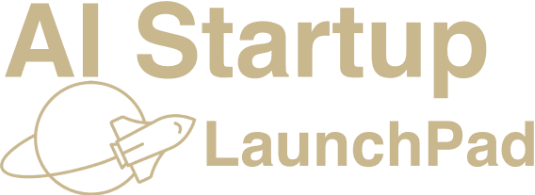Top AI Trends in Business for 2025: Strategic Insights & Practical Applications
Published: May 2025
Updated by AI Startup LaunchPad
“The next billion-dollar companies will be built by a few people using AI.” – Sam Altman, OpenAI
Introduction: AI in 2025 Is No Longer Optional—It’s Operational
Artificial Intelligence (AI) has transitioned from a competitive advantage to a core operational necessity. In 2025, AI is redefining how organizations of all sizes innovate, engage customers, streamline operations, and unlock growth. From small startups to global enterprises, those leveraging the latest AI trends are already outperforming their peers.
This comprehensive guide outlines the top AI trends transforming business in 2025, complete with real-world applications, emerging tools, and expert strategies. Whether you’re scaling a startup or modernizing a legacy organization, this post will help you turn AI hype into measurable impact.
Part 1: Generative AI in 2025 – From Novelty to Necessity
1. Content Generation 2.0: Hyper-Personalized, SEO-Optimized, Multilingual
AI-generated content is now precise, brand-aligned, and conversion-optimized.
Hyper-Personalization: Tools like Jasper AI and Copy.ai create tailored messages for individual users using behavioral and CRM data.
SEO Optimization with AI: Platforms such as Scalenut, SurferSEO, and NeuronWriter integrate real-time search trends and keyword clusters.
Multilingual Generation: Create high-quality content in 100+ languages using DeepL Write, Localize, and ContentQuo.
Visual & Audio Content Tools (2025 Leaders):
Text-to-Image: Midjourney v6, DALL·E 4, Leonardo.Ai
Video & Audio: RunwayML, Pika Labs, ElevenLabs, Synthesia
2. Generative Design & Virtual Prototyping
Generative Design Platforms: Autodesk Forma, Gravity Sketch, and nTopology use AI to generate CAD-ready product designs.
Virtual Prototyping & Simulation: Companies are cutting 30–50% of R&D cycles using tools like Ansys AI, Siemens NX, and Twinmotion.
3. Synthetic Data for Model Training
Why It Matters: Avoid regulatory and privacy issues while boosting model performance.
Top Platforms: Gretel.ai, MOSTLY AI, and Synthesis AI.
Use Cases: Healthcare, finance, autonomous vehicles, security, and personalized marketing.
Part 2: AI-Powered Customer Experience – The Personalization Imperative
1. Conversational AI: Smart, Multilingual, Emotion-Aware
Today’s chatbots are empathetic, proactive, and increasingly voice-enabled.
Advanced NLP & LLMs: Leverage Anthropic Claude, OpenAI GPT-4-turbo, and Google Gemini 1.5.
Key Features:
Multilingual support
Sentiment detection
Seamless agent handoff
Voice + text hybrid UI
2. Predictive UX: From Reaction to Anticipation
User Journey Prediction: Use tools like Amplitude, Mixpanel, and Heap to analyze behavior and personalize pathways.
AI-Powered Search: Platforms like Algolia NeuralSearch and Coveo Relevance Cloud understand context and intent.
AI-Driven A/B Testing: Use Optimizely, Kameleoon, and VWO to dynamically improve web/app experiences.
3. AI in Healthcare CX (B2B & B2C)
Personalized Treatment Plans: Powered by platforms like Tempus, Jasper Health, and Huma.
AI for Diagnostics: Tools like Lunit INSIGHT and Viz.ai assist clinicians in real-time.
Remote Patient Monitoring: Devices integrated with AI from Withings Health, Current Health, and Biofourmis.
Part 3: AI in Business Operations – Scaling Smarter, Not Harder
1. Hyper-Automation – Merging AI, RPA, and Low-Code
AI + automation = rapid efficiency at scale.
Leading Platforms: UiPath, SS&C Blue Prism, Automation Anywhere, Nanonets
Top Use Cases:
2. AI-Driven Business Intelligence
Forecasting & Trend Detection: Tools like Pecan AI, TIBCO Spotfire, and Qlik Sense
Real-Time Dashboards: Enhanced with Tableau Pulse, Power BI Copilot, and Metabase AI
3. AI in Supply Chain & Logistics
Predictive Inventory: Blue Yonder, ToolsGroup, and Kinaxis
Resilience Forecasting: Identify geopolitical, weather, or vendor risks in advance.
Route Optimization & Cost Efficiency: Use AI to slash transport costs by 20% or more.
Part 4: Emerging AI Technologies to Watch in 2025
1. Multimodal AI – Unified Understanding
What It Is: Models that understand text + image + audio + video together.
Real-World Uses: Smart assistants (e.g., GPT-4o), sentiment analysis from video + text, and product feedback loops.
Key Platforms: OpenAI, RunwayML, DeepMind Gemini, Hugging Face Transformers
2. Small Language Models (SLMs)
Why It Matters: More efficient, domain-specific, and privacy-friendly.
Popular SLMs: Phi-3 by Microsoft, Mistral, TinyLlama, LLaVA-Light
Use Cases:
Legal or medical summarization
On-device personalization
Customer support chatbots
3. Retrieval-Augmented Generation (RAG)
Definition: Combines internal knowledge bases with LLMs for accurate, up-to-date answers.
Leaders: LangChain, LlamaIndex, Pinecone, Vespa.ai
Use Cases:
AI-powered internal knowledge assistants
Legal document processing
Sales enablement
4. Computer Vision for Business
Manufacturing QA: CV detects microscopic defects in real time.
Retail Analytics: Track customer movement and engagement in-store.
Tools: Landing AI, [Scortex](https

